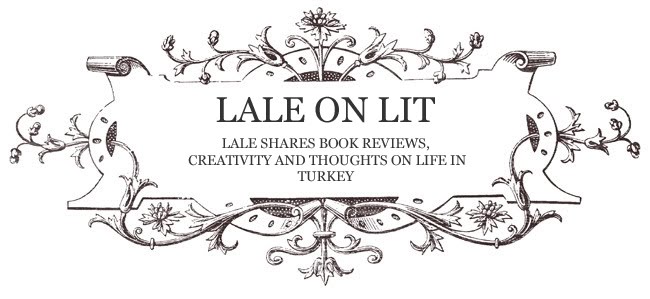For the last two weeks I’ve been touring two friends of mine around Izmir and beyond. One of them has been to Turkey before, and one of them is a newbie, but they’ve both had a lot of fun. I thought I’d outline what we did, so that any would-be travelers out there will have something to build their itinerary from!
I was mean to them on day one. They’d flown in from the UK the previous night at about 9 p.m. and hit the sack around eleven thirty, and I dragged them out at seven thirty in the morning to tromp around Ephesus and the Virgin Mary’s house.
(I was nice enough to feed them a traditional breakfast of gevrek (a round bagel-type bread studded with sesame seeds) with white cheese, tomatoes and Turkish tea before we left.)
First stop: Ephesus. It’s made almost entirely of marble so it’s inadvisable to go when it’s hot. Marble reflects light. People often forget to put sunscreen on the backs of their ears and knees. It’s not a good combination. So take my advice and go early.
Key sights include the baths, the toilets, the Terrace Houses (newly opened to the public in the last few years- the mosaics are spectacular!) the Celsus Library, the Ampitheatre and the world’s first street sign— for a brothel.
The foot indicates the direction. You can also spot a heart in the top left corner, a picture of a woman and money denoted in the bottom right corner.
The message: (as explained by a tour guide when I was much smaller.) Go this way. There’s a woman (or two) over there. If you want to love her, you have to give her money.
I still think it’s hilarious.
The next stop that day was the Virgin Mary’s house, known in Turkish as the Meryamana. I’ll quote Wikipedia here, because it explains everything better than me:
On October 18th, 1881, a French priest, the Abbé Julien Gouyet of Paris, discovered a small stone building on a mountain overlooking the Aegean Sea and the ruins of ancient Ephesus in Turkey. He believed it was the house where the Virgin Mary had lived in the final years of her life on earth as described in the visions of the German nun Anne Catherine Emmerich (1774-1824), published in detail in a book by Clemens Brentano. His discovery was not taken seriously. Ten years later, two Lazarist missionaries from Smyrna rediscovered the building, using the same source for a guide. They learned that the four-walled, roofless ruin had been venerated for a long time by the members of a distant mountain village who were descended from the Christians of Ephesus. They called it Panaya Kapulu ("Chapel of the Most Holy". They believed that she had died there. Every year they made a pilgrimage to the site on August 15th, the date on which most of the Christian world celebrated Mary's Assumption. On October 18th, 1881, a French priest, the Abbé Julien Gouyet of Paris, discovered a small stone building on a mountain overlooking the Aegean Sea and the ruins of ancient Ephesus in Turkey. He believed it was the house where the Virgin Mary had lived in the final years of her life on earth as described in the visions of the German nun Anne Catherine Emmerich (1774-1824), published in detail in a book by Clemens Brentano. His discovery was not taken seriously. Ten years later, two Lazarist missionaries from Smyrna rediscovered the building, using the same source for a guide. They learned that the four-walled, roofless ruin had been venerated for a long time by the members of a distant mountain village who were descended from the Christians of Ephesus. They called it Panaya Kapulu ("Chapel of the Most Holy"). They believed that she had died there. Every year they made a pilgrimage to the site on August 15th, the date on which most of the Christian world celebrated Mary's Assumption.
Wow. Pretty cool, right? What’s even cooler is that this nun they were talking about had never left Germany and was completely bedridden. A chapel has been built on the old foundations and the newest Pope visited a few years ago. You used to be able to light candles inside but there was a fire at some point so now it’s outside only.
Down a flight of steps from the actual house is a series of fountains. The three main fountains are referred to as the fountains of ‘Health, wealth and wisdom’ and I’ve kind of nicknamed the fourth double fountain as the fountain of love. After that, there’s a metal grille where pilgrims and visitors can tie their wishes written on pieces of paper.
On the way back, we stopped off at a great little shish kebab place called Yandim Cavus (www.yandimcavus.com). They make delicious cop sis served with bulgur wheat and lavash flatbreads. It’s a kind of an Ephesus tradition that we stop there for lunch—one time when I was about thirteen I dared to eat a spicy pepper and spent the rest of the meal miserably stuffing lavash into my mouth, because I hate yoghurt and wouldn’t let the waiters shove any down my throat to cool the burn.
That’s all I can muster up for today. I’ll post on the other numerous and exciting things we did at some later date!
lale









Turkey offers a mild climate, the best period to visit it is spring, when it is not invaded by tourists.
ReplyDeleteIf you are passionate about history, it is suggested that you visit the ruins if the temple of Arthemis (one of the 7 wonders), and make sure you do not miss out the Lycian Way, Didim, the ancient site of Troy, the temple of Apollo and the ruins of Ephesus. Whereas, if you are more keen on spending your holiday on the beach, you should visit Turkey in June and July when it is not so humid and hot.
There are breathtaking landscapes, miles of sandy beaches and a wide range of OutdoorActivities. There is plenty to do for all the family members! Only few know that Turkey is rich of thermal water, especially in Anatolia, where you could try cromo, thalasso and stone therapy.
These are only few of the reasons to choose Turkey as your next holiday destination. Recently, the recession has beaten hard consumers who are less willing to spend, luckyly Turkey offers cheap prices and affordable deals to meet consumers needs. When you get there, do not forget to try the best Kebabs you can possibly have for as little as £1 each. Whereas, if you have a passion for good food and culinary arts, Turkey is the best place to be. There is a wide range of restaurants where you can appreciate the tipical cuisine, and the best local wines.
The night life is very lively and there are several bars and clubs which are worth to visit. In addition, Budget airlines (Easyjet.com), hotels and resorts offer competitive rates and all-inclusive packages, as well as good service and all the comforts that you need, take a look at CheapAccommodationsinTurkey, and start planning your holiday today!